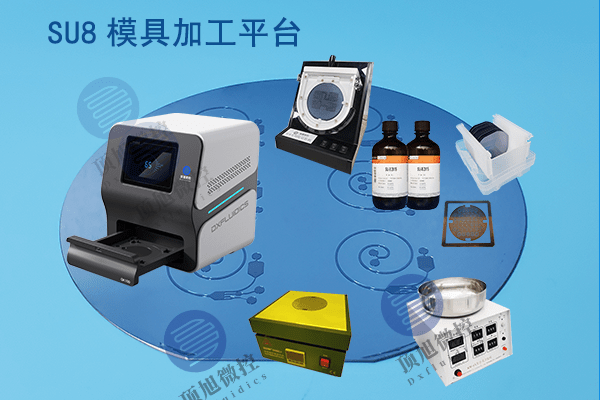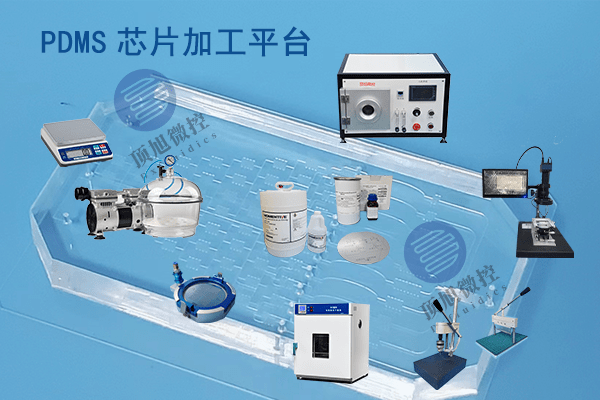In the rapid evolution of the field of science and technology, microfluidics has emerged to lead a technological revolution. Developments in this field have not only enriched scientific research, but have also had a far-reaching impact in industry and the medical field.
This paper will delve into the origins, core principles, laboratory research and industrial applications of microfluidics to reveal the story behind this technological revolution.
I. Origins of microfluidics
The origins of microfluidics can be traced back to the early 1990s. At that time, scientists and engineers began to conduct in-depth research on the behavior of tiny droplets and microfluidics in microchannels. The development of this field could not have been possible without the following landmark events and outstanding figures:
1. Early studies (early 1990s)
Microfluidics got its start in the early 1990s when researchers began to explore the flow, mixing and manipulation of tiny droplets in microchannels. Research during this period focused on the flow properties of microfluids and fabrication techniques for microchannels.
2. The work of Stephen Quake
Stephen Quake is one of the preeminent pioneers of microfluidic technology. His research has played a key role in advancing microfluidics.Quake is a professor at Stanford University, where his research team has made significant breakthroughs in the design, fabrication, and biomedical applications of microfluidics.

3. Biomedical applications in the laboratory
Microfluidics initially found wide application in biomedical research. Researchers began to use microfluidic chips to perform biological experiments such as cell sorting, gene sequencing, and protein analysis, thereby increasing the efficiency and accuracy of biomedical research.
4. Advances in manufacturing technology
Significant advances have been made in the fabrication of microfluidic chips. Advances in microfabrication technology allow scientists to design and fabricate more complex microfluidic structures to meet different experimental needs. This includes advances in micromachining technology, materials science, and innovations in micro- and nano-fabrication techniques.
5. Industrialization and commercialization
As the technology matures, microfluidics is beginning to advance into the industrial arena. Several companies and startups have ventured into the development and production of microfluidics for applications in medical, pharmaceutical, environmental monitoring and other fields, bringing opportunities for innovation and application to industry.
Landmark events in microfluidics
In addition to the origins and developments described above, there have been a number of landmark events that have further contributed to the popularization and application of microfluidics:
1. 1992 - First microfluidics paper
In 1992, M.A. Burns et al. published a paper entitled “Droplet Transport in Tiny Channels” in the journal Science, which was an important beginning in the field of microfluidics. This study laid the theoretical foundation of microfluidics and sparked the interest of more researchers.
2. 2005 - Portable DNA testing instrument with microfluidic system
In 2005, a portable DNA testing instrument equipped with a microfluidic system was introduced, allowing molecular biology experiments to be performed outside the laboratory and accelerating the development of gene sequencing and diagnostics.
3. 2015 - Embryo selection by microfluidics
In 2015, a landmark study used microfluidics to enable the screening of embryos for in vitro fertilization, improving the success rate of assisted reproductive technology and having a significant impact on infertility treatment.
II. Principles involved in microfluidic technology
Microfluidics its design principles are based on microchannels, microvalves, detection systems and control of fluid properties. The following is a detailed description of the design principles of microfluidics:
- Microchannel design: At the heart of microfluidics is the design of microchannels. Microchannels are typically elongated tubes at the micron level, and precise control of their geometry and dimensions is essential to achieve the desired fluidic operation. Channels can have different shapes such as straight lines, bifurcations, crosses or loops to suit different applications. The dimensions of microchannels can vary between a few microns to hundreds of microns, often depending on the desired fluid operation and application.
- MICRO VALVE CONTROL: Micro valves are another important component of a microfluidic system. They are used to control the flow and stopping of fluids in microchannels. Micro valves can work on a number of different principles, including electrical, mechanical, and pneumatic control. These valves can be controlled by microprocessors or computers to achieve highly precise manipulation of fluids. The design and control of micro-valves is critical to the realization of complex fluid manipulation tasks.
- Detection Systems: In order to monitor components in a fluid or perform specific analyses, microfluidic systems often require integrated detection systems. These detection systems can include optical, electrochemical, mass spectrometry, or other sensors for real-time monitoring of compounds, particles, or cells in the fluid. The choice of detection system depends on the desired application and detection goal. Their integration with microfluidic systems can provide real-time, highly sensitive analysis.
- Fluid property control: Microfluidic systems often require tight control of fluid properties, including flow rate, concentration, temperature, viscosity, etc. The control of these parameters is important to ensure that experiments are accurate and reproducible. Microfluidic systems typically include temperature control devices, flow rate control systems, and mixing systems to ensure that the behavior of the fluid in the microchannel matches the experimental requirements.
- Fluid operating principles: The basic operating principles of microfluidics include dispersion, dispensing, mixing and separation. Dispersion is the division of a sample into tiny droplets or units of analysis. Dispensing is the precise distribution of different liquids to specific locations in the microchannel. Mixing is the mixing of different liquids or reagents together for reaction or analysis. Separation is the separation of different substances for analysis or sorting.
The design principle of microfluidics emphasizes the highly precise control and manipulation of tiny fluids, which has led to a wide range of applications in biomedicine, pharmaceuticals, environmental monitoring and other fields. It not only improves the efficiency and reproducibility of experiments, but also opens up new experimental methods that help accelerate scientific research and solve practical problems.
III. Microfluidics research in the laboratory
Microfluidics is widely studied and applied in laboratories. The following are some typical research directions of microfluidics in the laboratory:
3.1 Biomedical research
Microfluidics has an important place in biomedical research. It is used in areas such as cell sorting, gene sequencing, protein analysis, etc., and helps to accelerate the progress of biomedical research.
3.2 Drug development
Microfluidics plays a key role in drug development. It can be used for drug screening, drug delivery and drug metabolism studies, shortening the R&D cycle and reducing costs.


3.3 Chemical analysis
Microfluidics is also widely used in chemical analysis. It can be used for sample pre-treatment, analysis and detection, improving the accuracy and efficiency of experiments.
3.4 Environmental monitoring
The application of microfluidic technology in environmental monitoring is also gradually increasing. It can be used to detect water quality, air pollution, soil pollution and other issues to support environmental protection.
3.5 Food safety
Food safety has always been in the spotlight, and microfluidics has potential in the field of rapid detection in food. It can identify harmful substances in food and ensure the quality and safety of food.
IV. Microfluidic chips
Microfluidic chips are the actual implementation tools of microfluidic technology, which are tiny chips fabricated by micromachining technology, containing microchannels, microvalves and detection components. The design and fabrication of microfluidic chips enable various fluidic operations such as droplet manipulation, mixing, dispensing, and analysis.
It is an integrated system that enables multiple fluidic operations on the surface of the chip or inside, and is usually connected to an external control system, such as an electrical control system or a computer.


V. Industrial applications of microfluidics
Microfluidics is not just limited to the laboratory, it has started to be widely used in industry. Here are some industrial applications of microfluidics in different fields:
5.1 Health care
Microfluidics has a wide range of applications in healthcare. It is used for early cancer screening, infection pathogen detection, gene sequencing, etc., which helps to improve the accuracy of medical diagnosis.
5.2 Pharmaceutical industry
Microfluidics also plays an important role in the pharmaceutical industry. It is used in drug discovery, drug preparation and drug delivery, accelerating the process of developing and bringing new drugs to market.
5.3 Environmental monitoring
Microfluidic technology is widely used in the field of environmental monitoring, it can be used to monitor water quality, air pollution, soil quality and so on, to help the government and environmental protection agencies to better manage environmental resources and maintain ecological balance.
5.4 Food safety
Food safety has always been a major concern and microfluidics provides an important tool in the field of food safety. It can be used for rapid detection of harmful substances in food, ensuring food quality and safety while providing consumers with more confidence.
5.5 Energy sector
Microfluidics also has a wide range of applications in the energy field. It can be used to improve battery performance, prepare fuel cells, optimize fossil fuel production, etc., which contributes to the effective use of energy resources and environmental protection.
VI. The future of microfluidics
The future of microfluidics is full of potential and is expected to continue to lead the way in technology development. Here are some of the possibilities for the future of microfluidics:
6.1 Intelligence and automation
In the future, microfluidics will become more intelligent and automated. By integrating machine learning and artificial intelligence technologies, microfluidic systems can better control and optimize experimental processes, improving efficiency and reproducibility.
6.2 Versatility
Microfluidic chips will become more versatile, capable of performing multiple analyses and operations simultaneously, thus reducing the complexity and cost of instrumentation. This will make them more suitable for research and applications in different fields.
6.3 Remote Monitoring
The development of remote monitoring technologies will allow researchers to remotely control and monitor microfluidic experiments globally, facilitating international collaboration and data sharing. This will help accelerate scientific progress and problem solving.
6.4 New material applications
The development of new materials will provide more options for the fabrication of microfluidic chips, improving their durability and performance. This will promote the development of microfluidic technology and the expansion of application areas.
VII. Conclusion
Microfluidics is not only being extensively studied in the laboratory, but is also gradually moving into industry with far-reaching implications. From healthcare to environmental monitoring, from pharmaceutical industry to food safety, microfluidics is changing the way we live and work. In the future, with the continuous development and innovation of technology, microfluidic technology is expected to continue to promote the progress of science and technology and bring more benefits to human society.
This technological revolution is an exciting prospect that will continue to lead us to explore new possibilities, solve complex problems, and drive sustainable development in society. The future of microfluidics will not be confined to the laboratory; it will move to industry, changing our way of life and the future technological landscape.
© 2025. All Rights Reserved. 苏ICP备2022036544号-1















